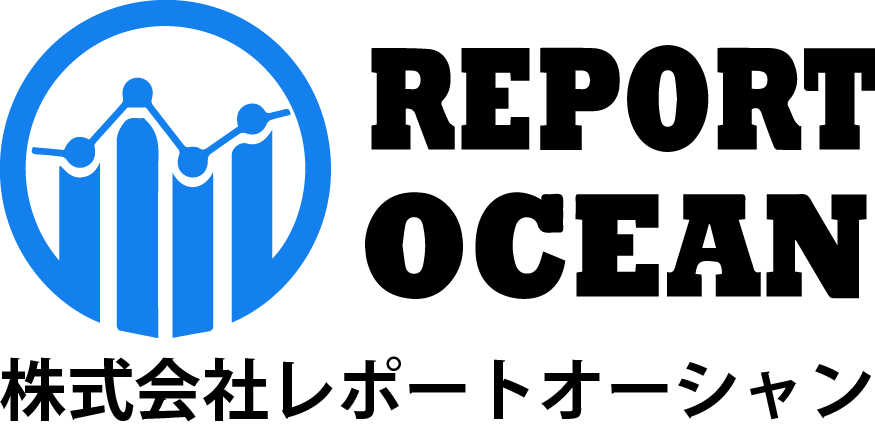日本細胞および遺伝子治療市場規模シェア、競争環境、トレンド分析レポート:治療タイプ別(細胞治療、遺伝子治療)、適応症別(心血管疾患、がん疾患、遺伝子疾患、感染症、神経疾患、その他)、デリバリーモード別(インビボ(体内)、エクスビボ(体外))、エンドユーザー別(病院、がん治療センター、製薬およびバイオテクノロジー企業、その他): 2024年から2032年までの機会分析および業界予測
レポートID : ROJP1124333 |
最終更新 : 2024年11月 |
フォーマット : ![]() :
: ![]() :
: ![]()
1 Preface
2 Scope and Methodology
2.1 Objectives of the Study
2.2 Stakeholders
2.3 Data Sources
2.3.1 Primary Sources
2.3.2 Secondary Sources
2.4 Market Estimation
2.4.1 Bottom-Up Approach
2.4.2 Top-Down Approach
2.5 Forecasting Methodology
3 Executive Summary
4 Japan Cell and Gene Therapy Market - Introduction
4.1 Overview
4.2 Market Dynamics
4.3 Industry Trends
4.4 Competitive Intelligence
5 Japan Cell and Gene Therapy Market Landscape
5.1 Historical and Current Market Trends (2019-2022)
5.2 Market Forecast (2023-2032)
6 Japan Cell and Gene Therapy Market - Breakup by Therapy Type
6.1 Cell Therapy
6.1.1 Overview
6.1.2 Historical and Current Market Trends (2019-2022)
6.1.3 Market Segmentation
6.1.3.1 Stem Cell
6.1.3.2 Non-Stem Cell
6.1.4 Market Forecast (2023-2032)
6.2 Gene Therapy
6.2.1 Overview
6.2.2 Historical and Current Market Trends (2019-2022)
6.2.3 Market Forecast (2023-2032)
7 Japan Cell and Gene Therapy Market - Breakup by Indication
7.1 Cardiovascular Disease
7.1.1 Overview
7.1.2 Historical and Current Market Trends (2019-2022)
7.1.3 Market Forecast (2023-2032)
7.2 Oncology Disorder
7.2.1 Overview
7.2.2 Historical and Current Market Trends (2019-2022)
7.2.3 Market Forecast (2023-2032)
7.3 Genetic Disorder
7.3.1 Overview
7.3.2 Historical and Current Market Trends (2019-2022)
7.3.3 Market Forecast (2023-2032)
7.4 Infectious Disease
7.4.1 Overview
7.4.2 Historical and Current Market Trends (2019-2022)
7.4.3 Market Forecast (2023-2032)
7.5 Neurological Disorder
7.5.1 Overview
7.5.2 Historical and Current Market Trends (2019-2022)
7.5.3 Market Forecast (2023-2032)
7.6 Others
7.6.1 Historical and Current Market Trends (2019-2022)
7.6.2 Market Forecast (2023-2032)
8 Japan Cell and Gene Therapy Market - Breakup by Delivery Mode
8.1 In-Vivo
8.1.1 Overview
8.1.2 Historical and Current Market Trends (2019-2022)
8.1.3 Market Forecast (2023-2032)
8.2 Ex-Vivo
8.2.1 Overview
8.2.2 Historical and Current Market Trends (2019-2022)
8.2.3 Market Forecast (2023-2032)
9 Japan Cell and Gene Therapy Market - Breakup by End User
9.1 Hospitals
9.1.1 Overview
9.1.2 Historical and Current Market Trends (2019-2022)
9.1.3 Market Forecast (2023-2032)
9.2 Cancer Care Centers
9.2.1 Overview
9.2.2 Historical and Current Market Trends (2019-2022)
9.2.3 Market Forecast (2023-2032)
9.3 Pharmaceutical and Biotechnology Companies
9.3.1 Overview
9.3.2 Historical and Current Market Trends (2019-2022)
9.3.3 Market Forecast (2023-2032)
9.4 Others
9.4.1 Historical and Current Market Trends (2019-2022)
9.4.2 Market Forecast (2023-2032)
10 Japan Cell and Gene Therapy Market – Breakup by Region
10.1 Kanto Region
10.1.1 Overview
10.1.2 Historical and Current Market Trends (2019-2022)
10.1.3 Market Breakup by Therapy Type
10.1.4 Market Breakup by Indication
10.1.5 Market Breakup by Delivery Mode
10.1.6 Market Breakup by End User
10.1.7 Key Players
10.1.8 Market Forecast (2023-2032)
10.2 Kansai/Kinki Region
10.2.1 Overview
10.2.2 Historical and Current Market Trends (2019-2022)
10.2.3 Market Breakup by Therapy Type
10.2.4 Market Breakup by Indication
10.2.5 Market Breakup by Delivery Mode
10.2.6 Market Breakup by End User
10.2.7 Key Players
10.2.8 Market Forecast (2023-2032)
10.3 Central/ Chubu Region
10.3.1 Overview
10.3.2 Historical and Current Market Trends (2019-2022)
10.3.3 Market Breakup by Therapy Type
10.3.4 Market Breakup by Indication
10.3.5 Market Breakup by Delivery Mode
10.3.6 Market Breakup by End User
10.3.7 Key Players
10.3.8 Market Forecast (2023-2032)
10.4 Kyushu-Okinawa Region
10.4.1 Overview
10.4.2 Historical and Current Market Trends (2019-2022)
10.4.3 Market Breakup by Therapy Type
10.4.4 Market Breakup by Indication
10.4.5 Market Breakup by Delivery Mode
10.4.6 Market Breakup by End User
10.4.7 Key Players
10.4.8 Market Forecast (2023-2032)
10.5 Tohoku Region
10.5.1 Overview
10.5.2 Historical and Current Market Trends (2019-2022)
10.5.3 Market Breakup by Therapy Type
10.5.4 Market Breakup by Indication
10.5.5 Market Breakup by Delivery Mode
10.5.6 Market Breakup by End User
10.5.7 Key Players
10.5.8 Market Forecast (2023-2032)
10.6 Chugoku Region
10.6.1 Overview
10.6.2 Historical and Current Market Trends (2019-2022)
10.6.3 Market Breakup by Therapy Type
10.6.4 Market Breakup by Indication
10.6.5 Market Breakup by Delivery Mode
10.6.6 Market Breakup by End User
10.6.7 Key Players
10.6.8 Market Forecast (2023-2032)
10.7 Hokkaido Region
10.7.1 Overview
10.7.2 Historical and Current Market Trends (2019-2022)
10.7.3 Market Breakup by Therapy Type
10.7.4 Market Breakup by Indication
10.7.5 Market Breakup by Delivery Mode
10.7.6 Market Breakup by End User
10.7.7 Key Players
10.7.8 Market Forecast (2023-2032)
10.8 Shikoku Region
10.8.1 Overview
10.8.2 Historical and Current Market Trends (2019-2022)
10.8.3 Market Breakup by Therapy Type
10.8.4 Market Breakup by Indication
10.8.5 Market Breakup by Delivery Mode
10.8.6 Market Breakup by End User
10.8.7 Key Players
10.8.8 Market Forecast (2023-2032)
11 Japan Cell and Gene Therapy Market – Competitive Landscape
11.1 Overview
11.2 Market Structure
11.3 Market Player Positioning
11.4 Top Winning Strategies
11.5 Competitive Dashboard
11.6 Company Evaluation Quadrant
12 Profiles of Key Players
12.1 CORESTEM Inc.
12.1.1 Business Overview
12.1.2 Services Offered
12.1.3 Business Strategies
12.1.4 SWOT Analysis
12.1.5 Major News and Events
12.2 Helixmith Co. Ltd.
12.2.1 Business Overview
12.2.2 Services Offered
12.2.3 Business Strategies
12.2.4 SWOT Analysis
12.2.5 Major News and Events
12.3 JCR Pharmaceuticals Co. Ltd.
12.3.1 Business Overview
12.3.2 Services Offered
12.3.3 Business Strategies
12.3.4 SWOT Analysis
12.3.5 Major News and Events
12.4 Nipro Corporation
12.4.1 Business Overview
12.4.2 Services Offered
12.4.3 Business Strategies
12.4.4 SWOT Analysis
12.4.5 Major News and Events
12.5 JCR Pharmaceuticals Co., Ltd,
12.5.1 Business Overview
12.5.2 Services Offered
12.5.3 Business Strategies
12.5.4 SWOT Analysis
12.5.5 Major News and Events
12.6 Aurion Biotech
12.6.1 Business Overview
12.6.2 Services Offered
12.6.3 Business Strategies
12.6.4 SWOT Analysis
12.6.5 Major News and Events
12.7 Johnson & Johnson Services
12.7.1 Business Overview
12..2 Services Offered
12.7.3 Business Strategies
12.7.4 SWOT Analysis
12.7.5 Major News and Events
13 Japan Cell and Gene Therapy Market - Industry Analysis
13.1 Drivers, Restraints, and Opportunities
13.1.1 Overview
13.1.2 Drivers
13.1.2.1 Growth in the Prevalence of Chronic Diseases
13.1.3 Restraints
13.1.3.1 High Costs and Failure Rate in Clinical Trials
13.1.4 Opportunities
13.1.4.1 Growth in Strategic Alliances
13.2 Porters Five Forces Analysis
13.2.1 Overview
13.2.2 Bargaining Power of Buyers
13.2.3 Bargaining Power of Suppliers
13.2.4 Degree of Competition
13.2.5 Threat of New Entrants
13.2.6 Threat of Substitutes
13.3 Value Chain Analysis
14 Appendix
無料サンプルを入手する ![]()
この無料サンプルには、トレンド分析から推定・予測まで、さまざまなデータが含まれています。
最新レポート
お問い合わせ
-
- JAPAN : 03-6899-2648
-
- EMAIL : [email protected]







